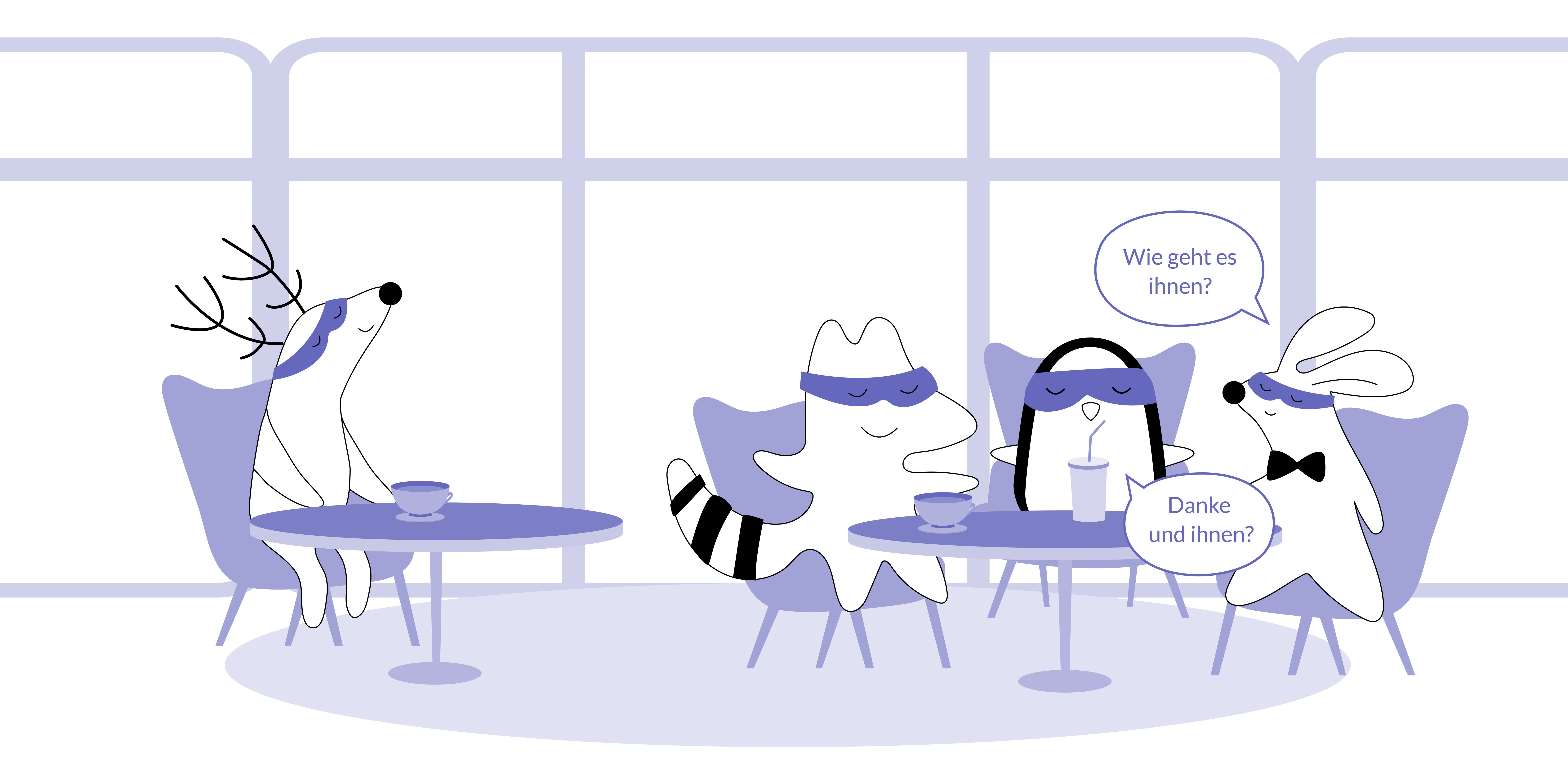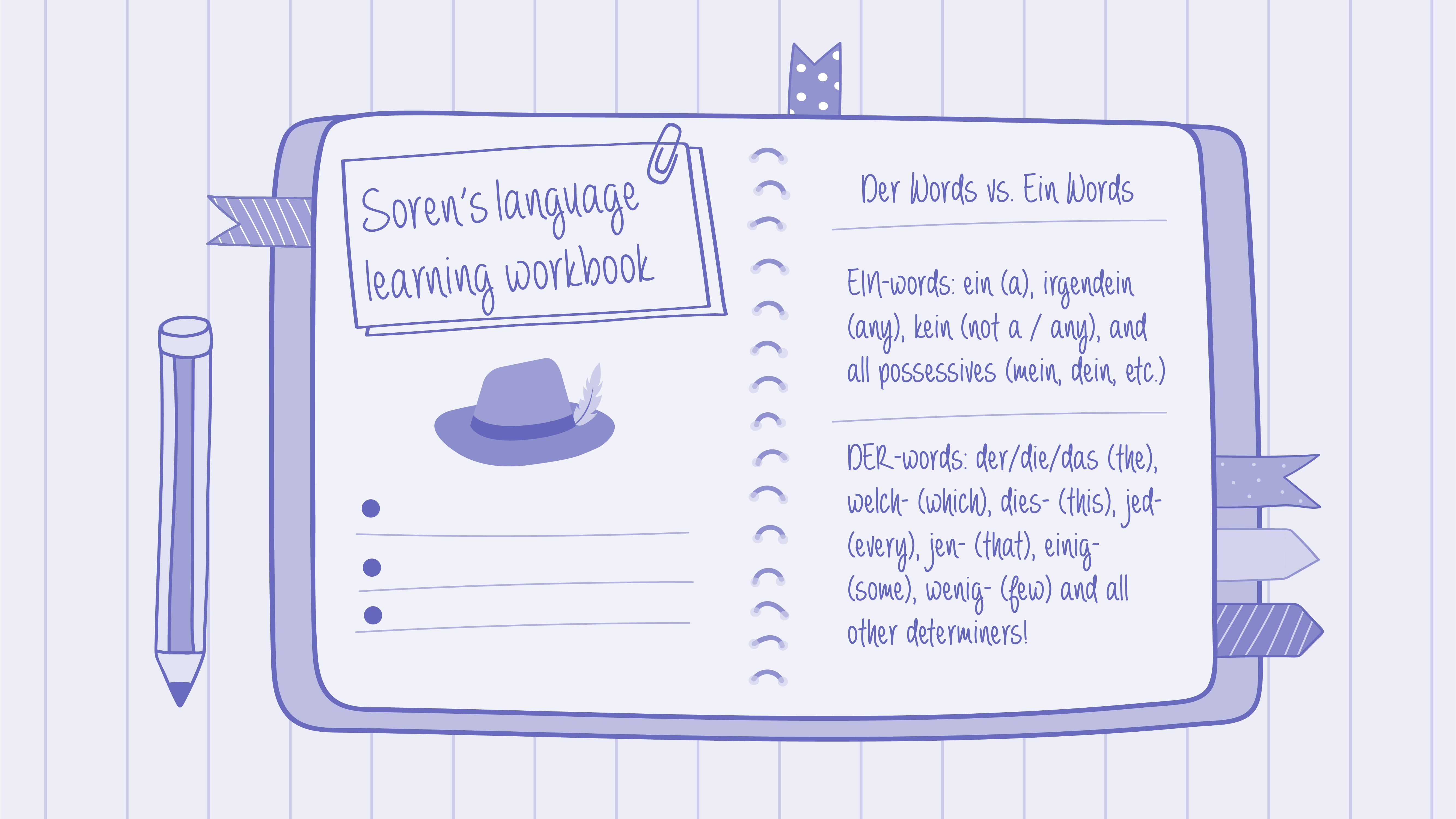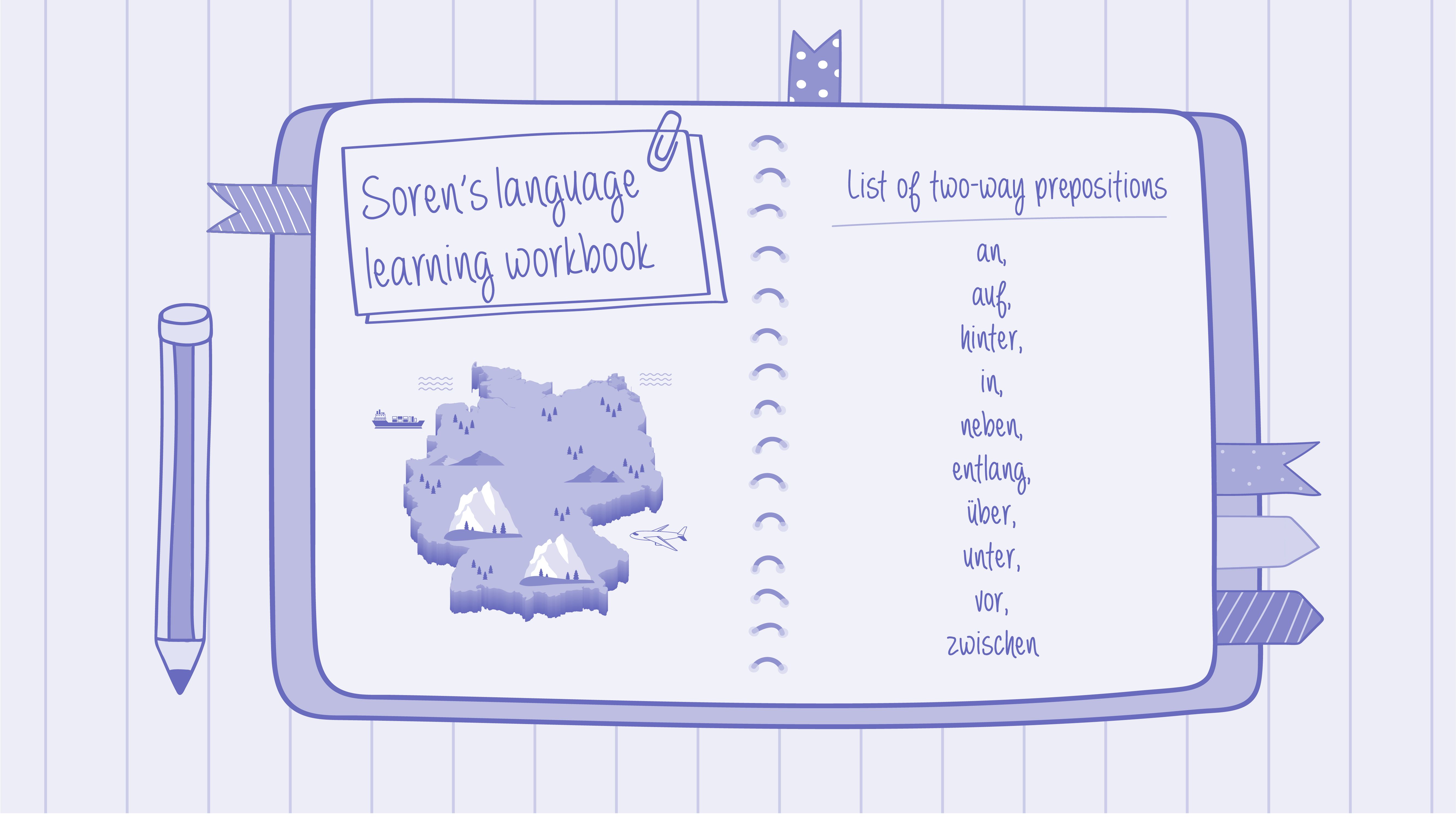
Picture this: You're sitting in a cozy Berlin coffee shop, eavesdropping on the lively conversations around you. The excitement rises as your understanding of the German language deepens. But suddenly, you're hit with that all-too-familiar feeling of dread — grammar anxiety.
Fear not, language learners! We've compiled a list of the best drills to help you conquer those pesky German grammar rules and set you on the path to correct usage and overall fluency.
So, refill your coffee cup, and dive into these tried-and-true exercises!
Learn German with Langster
Declension Demystified: Articles and Cases
The German language boasts four cases (nominative, accusative, dative, and genitive), each with its own set of definite and indefinite articles. Understanding how these articles change based on case and gender is crucial for mastering German grammar.
Start by creating flashcards for each article in its various forms (e.g., der/die/das, ein/eine/ein).
As you practice reciting them aloud, challenge yourself to think of nouns that correspond to each combination of article, gender, and case. For example:
German
English
der Apfel
the apple
nominative, masculine
German
English
die Tasche
the bag
accusative, feminine
This drill not only reinforces your understanding of declensions but also expands your vocabulary.
Decoding Der Words and Ein Words: Mastering Adjective Endings
German adjective endings can be quite a headache for language learners, but understanding how they work is essential for building accurate sentences.
Adjective endings depend on gender, case, and whether the noun is preceded by a definite article — der words — or indefinite article — ein words.
To tackle der words, begin by reviewing the definite articles in each case (e.g., der/die/das, den/die/das, dem/der/dem).
Next, familiarize yourself with the corresponding adjective endings for each combination of case and gender (e.g., -e, -en, -em). For example:
German
English
der große Baum
the big tree
nominative, masculine
German
English
den kleinen Hund
the little dog
accusative, masculine
Practicing these patterns will help you internalize how adjective endings change with der words.
For ein words, focus on the indefinite articles in all four cases (e.g., ein/eine/ein, einen/eine/ein).
Then, study the matching adjective endings (e.g., -er, -es, -em). Examples include:
German
English
ein schönes Haus
a beautiful house
nominative, neuter
German
English
einer langen Reise
a long journey
genitive, feminine
By comparing and contrasting the different combinations of gender and case with both der and ein words, you'll gain a better understanding of German adjective endings.
Remember: practice makes perfect!
Combine der and ein words with various adjectives and nouns to create sentences that highlight different cases and genders. This exercise will improve your ability to use appropriate adjective endings in context and enhance your overall German grammar skills.

Word Order Wonders: Mastering Sentence Structure
One of the trickiest aspects of German grammar is navigating its flexible word order. Although subject-verb-object is the most common sentence structure, variations arise due to the placement of adverbs, conjunctions, and modal verbs.
Begin this drill by writing simple sentences in the basic subject-verb-object structure. Next, experiment with different sentence elements (e.g., time expressions, subordinating conjunctions) and move them around within the sentence.
For example, "Ich gehe heute ins Kino." can become "Heute gehe ich ins Kino." or "Ins Kino gehe ich heute."
By manipulating sentence elements, you'll gain a better understanding of how word order affects the final meaning of the sentence.
Verb Conjugation Confidence: Regular and Irregular Verbs
Verb conjugation is fundamental in any language, and German is no exception.
Regular verbs follow a consistent pattern, while irregular verbs require memorization due to their unique conjugations.
To practice regular verb conjugation, choose a verb and write out its conjugation for all personal pronouns (ich, du, er/sie/es, etc.). Repeat this process with several different regular verbs to solidify the pattern in your memory.
For irregular verbs, create flashcards showing the verb's infinitive form on one side and its conjugated forms on the other. Review these flashcards regularly to commit the irregular conjugations to memory.
Prefix Power: Understanding Separable and Inseparable Verbs
German verbs often have prefixes that can either be separable or inseparable. Knowing the difference between the two types is essential for correct sentence formation.
Start by making a list of common separable and inseparable prefixes (e.g., auf-, ver-, an-, ent-). Then, write down examples of verbs with each prefix, and create sentences using both the infinitive and conjugated forms.
By focusing on sentence construction using prefixed verbs, you'll become more comfortable identifying and applying separable and inseparable prefixes in context.

Reflexive Rule: Mastering Reflexive Verbs
Reflexive verbs (reflexive Verben) are those that require a reflexive pronoun (e.g., sich) in addition to the subject pronoun. These verbs are commonly used in German to describe daily routines or personal experiences.
To practice using reflexive verbs, create a daily routine timeline and fill it with reflexive verbs that correspond to your activities (e.g., "sich anziehen" for getting dressed). Write out the conjugation of each verb for all personal pronouns, then create sentences describing your routine in both the present and past tenses.
This exercise will help you recognize and properly use reflexive verbs in everyday conversation.
Subjunctive Savvy: Forming Hypothetical Statements
The subjunctive mood in German allows you to express hypothetical situations, wishes, and polite requests. It is formed using either the subjunctive I (Konjunktiv I) or subjunctive II (Konjunktiv II), depending on context.
Begin by familiarizing yourself with the conjugation rules for both forms of the subjunctive. Then, practice creating sentences that express hypothetical situations, such as:
German
English
Wenn ich reich wäre, würde ich ein Haus kaufen.
If I were rich, I would buy a house.
This drill will enhance your ability to discuss abstract ideas and scenarios with native speakers.
Preposition Precision: Mastering Two-Way Prepositions
In German, some prepositions can govern either the accusative or dative case, depending on whether they indicate motion or location. These are called two-way prepositions.
To master this concept, create a list of common two-way prepositions. These include ten prepositions:
- an,
- auf,
- hinter,
- in,
- neben,
- entlang,
- über,
- unter,
- vor,
- zwischen.
Now, find example sentences that use them in both cases. Practice identifying the correct case by determining whether the sentence indicates motion or location.
By focusing on accusative-dative prepositions and their usage, you'll improve your overall grammar accuracy.

German Grammar Drills by Ed Swick: An Overview
If you’re looking for more extensive practice, we strongly recommend the book German Grammar Drills by Ed Swick. It’s a comprehensive guide designed to help learners of all levels improve their German language skills.
The book is structured around a series of drills and exercises that aim to reinforce key concepts and build a foundational understanding of German grammar.
Each chapter in German Grammar Drills starts with the most focused review of a specific topic, such as verb conjugation or noun cases, and includes explanations, helpful examples, and an extensive progression of rigorous drill exercises to help learners master the content.
One of the book’s unique features is its emphasis on context and usage. Swick gives learners various real-life examples to help them understand how grammar concepts are used in practice.
Accessible style and format are an additional bonus — simple grammar reviews are easy to understand, and the answer key will be useful for both beginning and intermediate learners.
This textbook’s focus on real-life application is especially useful for those who want to strengthen their conversational skills or prepare for interactions with native German speakers.
Overall, German Grammar Drills is a valuable resource that covers all the practice you’ll need to improve your German grammar knowledge and proficiency, whether for academic or personal purposes.
The Bottom Line

Mastering German grammar is vital to improving your overall fluency and understanding of the language. With these grammar drills and our Langster app, which provides extensive audio support from native speakers, you'll be well-equipped to tackle even the most daunting aspects of German grammar.
Remember that practice makes perfect — stay consistent and dedicated to your studies. Soon enough, you'll be confidently chatting away in German without a trace of grammar anxiety!









